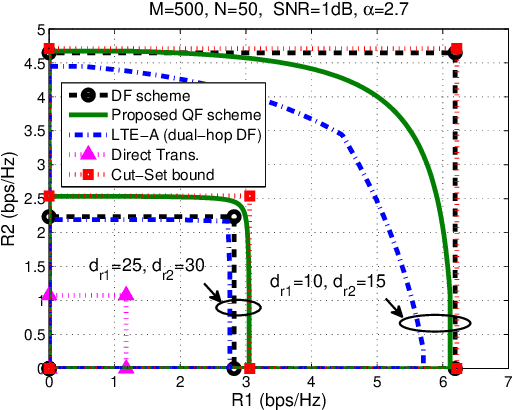Resource Allocation for Massive MIMO HetNets with Quantize-Forward Relaying
Paper and Code
May 24, 2021



We investigate how massive MIMO impacts the uplink transmission design in a heterogeneous network (HetNet) where multiple users communicate with a macro-cell base station (MCBS) with the help of a small-cell BS (SCBS) with zero-forcing (ZF) detection at each BS. We first analyze the quantize-forward (QF) relaying scheme with joint decoding (JD) at the MCBS. To maximize the rate region, we optimize the quantization of all user data streams at the SCBS by developing a novel water-filling algorithm that is based on the Descartes' rule of signs. Our result shows that as a user link to the SCBS becomes stronger than that to the MCBS, the SCBS deploys finer quantization to that user data stream. We further propose a new simplified scheme through Wyner-Ziv (WZ) binning and time-division (TD) transmission at the SCBS, which allows not only sequential but also separate decoding of each user message at the MCBS. For this new QF-WZTD scheme, the optimal quantization parameters are identical to that of the QF-JD scheme while the phase durations are conveniently optimized as functions of the quantization parameters. Despite its simplicity, the QF-WZTD scheme achieves the same rate performance of the QF-JD scheme, making it an attractive option for future HetNets.
 Add to Chrome
Add to Chrome Add to Firefox
Add to Firefox Add to Edge
Add to Edge